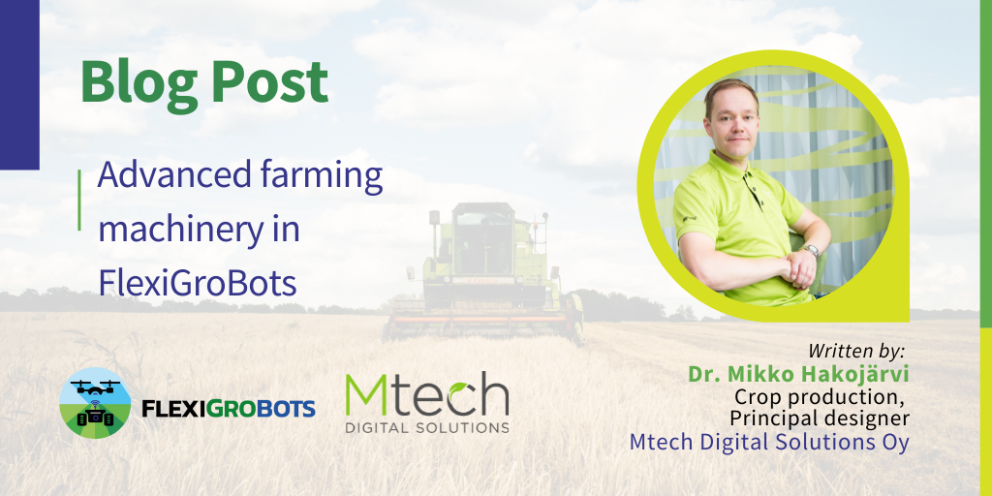Task files, prescription maps or variable rate application maps, are in general handy tools and a link between farm management systems and farm machinery. For the tractor itself, the content of a task file is rather limited, but for the connected tractor, the task files contain all the information needed about the work to be done in some specific location. For example, the fertilization task includes target rates for application and can include information about the product to be used.
In everyday farming, the task files reduce the necessity of checking cultivation plans while executing planned actions for the field. One great, but often forgotten advantage of ISOBUS task files for modern farming, is the possibility to start collecting site-specific data about field operations in a comprehensive manner. In the FlexiGroBots project, task files are closely associated with some of the tasks, but the use cases are slightly different from normal use cases of a task file.
The content of a task file depends on the work that shall be done, or to be specific, the content depends on the tractor involved in the task. The location of the work is defined by the area in the agricultural domain is usually the field border. This tells the implement where the work should be done and can accordingly be used to activate the implement.
The work itself is further defined in detail with a set of parameters that will guide the tractor in a site and case-specific manner. Such parameters can adjust the tractor within the work area or implement operation in exceptional cases. These parameters also include some information about used products although this product specific information might be on a general level. Moreover, a task file can also include information about the farm, owner or customer of the work area and for instance information about the worker who has been executing the work.
In the FlexiGroBots project, the concept of task files is closely associated with the scenario of pest management in rapeseed cultivation taking place in Finland. Pests in rapeseed are to be detected with an AI service from aerial photographs taken from the field with help of a drone equipped with suitable cameras.
The next step in the field is a target spraying operation with another drone or with an unmanned ground vehicle. In this operation, the areas where pests are detected are points or regions of interest. Current practice with task files is to modify the application rate for the regions where a higher dosage is needed.
The concept in general is very applicable for this project scenario and could work as a start point. However, the current concept does not assume the implement or tractor to have capabilities to identify pests in detail while executing the task as is the case for autonomous field robots. In the case of field robots, the detected locations of pests could be regions of interest in the task file whereas pest detection within these regions could be done by the robot. This kind of approach could enable the use of task files with autonomous units and give an additional option to improve the accuracy of treatments when the executing units have suitable capabilities. This approach will be explored as one of the main activities in the FlexiGroBots project.
Additionally, weed management in grass fields is another project scenario that is associated with task files but in a slightly different manner. In the weeding scenario, individual weeds are to be mechanically removed. Similarly, to the pest scenario, the weeds are first to be detected and for treating large areas it would be practical to utilize drones for collecting a sufficient number of aerial photos for AI and detection. In this case, the operation implies going to the location and extracting the weed from the ground.
When this operation is compared to the concept of task files it can be found that today task files are not used in similar cases. For this scenario, it would be needed to have locations of removable objects in a task file. However, as mechanical removal is something that requires operating at a centimetre level the topic is somewhat like the scenario with pests. The weeds are growing in crop vegetation and the autonomous unit executing the removal does need to detect the weed from other vegetation. The location could describe the weed location at a coarse level and accurate identification could be done by the executing unit.
The presented approaches in this Blog Post will be explored as part of the FlexiGroBots project. On the other hand, for current machinery, the changes are not urgently needed but there is a clear need for increasing the autonomy level in farming machinery. During machinery development, the description of work is not the only relevant aspect as it is equally important to evaluate new possibilities with developing machinery – for instance, more detailed observation of the target before execution.
